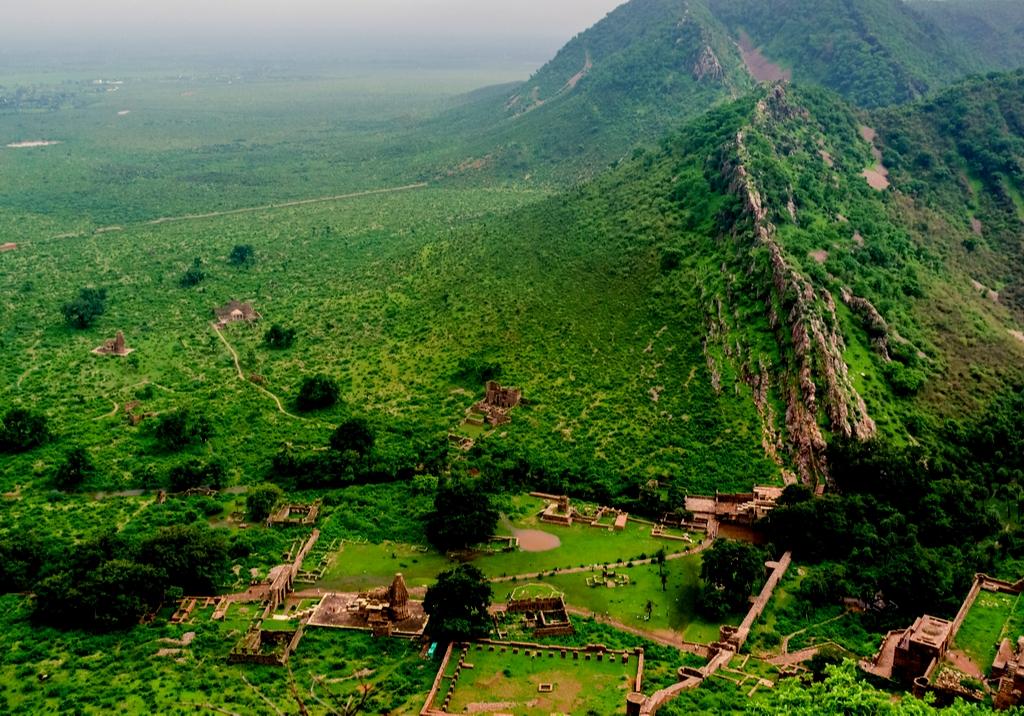The central government has set up a committee under the chairmanship of additional director general of forests (Project Tiger), Union environment ministry, to steer the safari project The Haryana government will set up an Aravalli foundation to develop the safari park in the forested regions of Gurugram and Nuh and the proposed park will have 10 types of open enclosures or zones for different animals and birds, said state officials in the know of the matter on Thursday.
On September 29, chief minister Manohar Lal Khattar announced that the jungle safari park will come up over 10,000 acres of the protected Aravallis in Gurugram and Nuh, and once complete, it will be the world’s largest curated or man-made safari park in the world.
Addressing media persons in Chandigarh on Thursday, Khattar outlined the jungle safari plan and said it will create jobs for the local youth, especially in the 10 villages in the vicinity of the park. An Aravalli Foundation will be established to act as a special purpose vehicle for developing the park, he said.
The locals of Bhondsi, Ghamroj, Alipur, Tikli and Aklimpur, Naurangpur and Bar Gujjar villages in Gurugram and Kota Khandewla, Gangani, Mohamadpur Ahir, Kharak, Jalalpur, Bhango and Chalka villages in Nuh will benefit from the project, the chief minister said. Officials said jobs will be related to construction, and as security guards and supervisors, among others.
The central government has set up a committee under the chairmanship of additional director general of forests (Project Tiger), Union environment ministry, to steer the safari project.
Currently, outside of Africa, Sharjah has the largest curated safari park, covering around 2,000 acres, and the Aravalli park will be five times the size of the Sharjah park, said officials.
The jungle safari park will have 10 zones, including a large herbarium, aviary/bird park, four enclosures for big cats, a large area for herbivores, an area for exotic animals and birds, an underwater world, nature trails, visitors, tourism zones, and botanical gardens, among other features.
“The jungle safari project will not only boost tourism in the state but also provide ample employment opportunities to the local people. Also, companies with international experience in designing and operating such facilities will be shortlisted,” said Khattar.
Officials said as there is no national park in the Aravallis and the jungle safari project will help protect the critical leopard population in the Aravalli forests and also the wildlife corridor from Asola Bhatti wildlife sanctuary in Delhi to Sariska wildlife sanctuary in Rajasthan.
Khattar said furthermore, villagers will also benefit from the Haryana government’s home stay policy. As a part of this scheme, home owners can offer rooms or theirs homes to tourists and visitors on reasonable rents.
“The Aravalli range is a cultural heritage where many species of birds, wild animals, butterflies, etc. are found. In this jungle safari, 180 species of birds, 15 species of mammals, 29 species of aquatic animals and reptiles and 57 species of butterflies that exist in the Aravallis will be protected and conserved,” he said.
The chief minister also said the Central Zoo Authority (CZA) officials, who visited the sites of the proposed safari park in Gurugram and Nuh, to assess the feasibility of the project, noted that there is adequate land of appropriate quality and there is scope for raising tree belts of adequate width to act as a buffer against noise and air pollution.
CZA officials could not be reached for comment.
“There is motorable access to the selected sites and there is a possibility for obtaining potable water to the site through the pipeline supplying water to Gurugram. They have done an evaluation study of the area and have agreed upon the technical feasibility of setting up such a park,” Khattar said.
According to the CZA guidelines, carnivore safaris should have a minimum area of 20 hectares while herbivore safaris should have a minimum of 30 hectares.
A wildlife activist based in Gurugram said the project is a welcome step to conserve a large extent of the Aravallis. “It is hoped that the extension of roads and constructions for the safari will be minimal and concentrated in a small area. The protection of the remaining areas will lead to conservation of native fauna and flora and the regeneration of native Aravalli species,” he said, requesting anonymity.
Source:Hindustantimes





